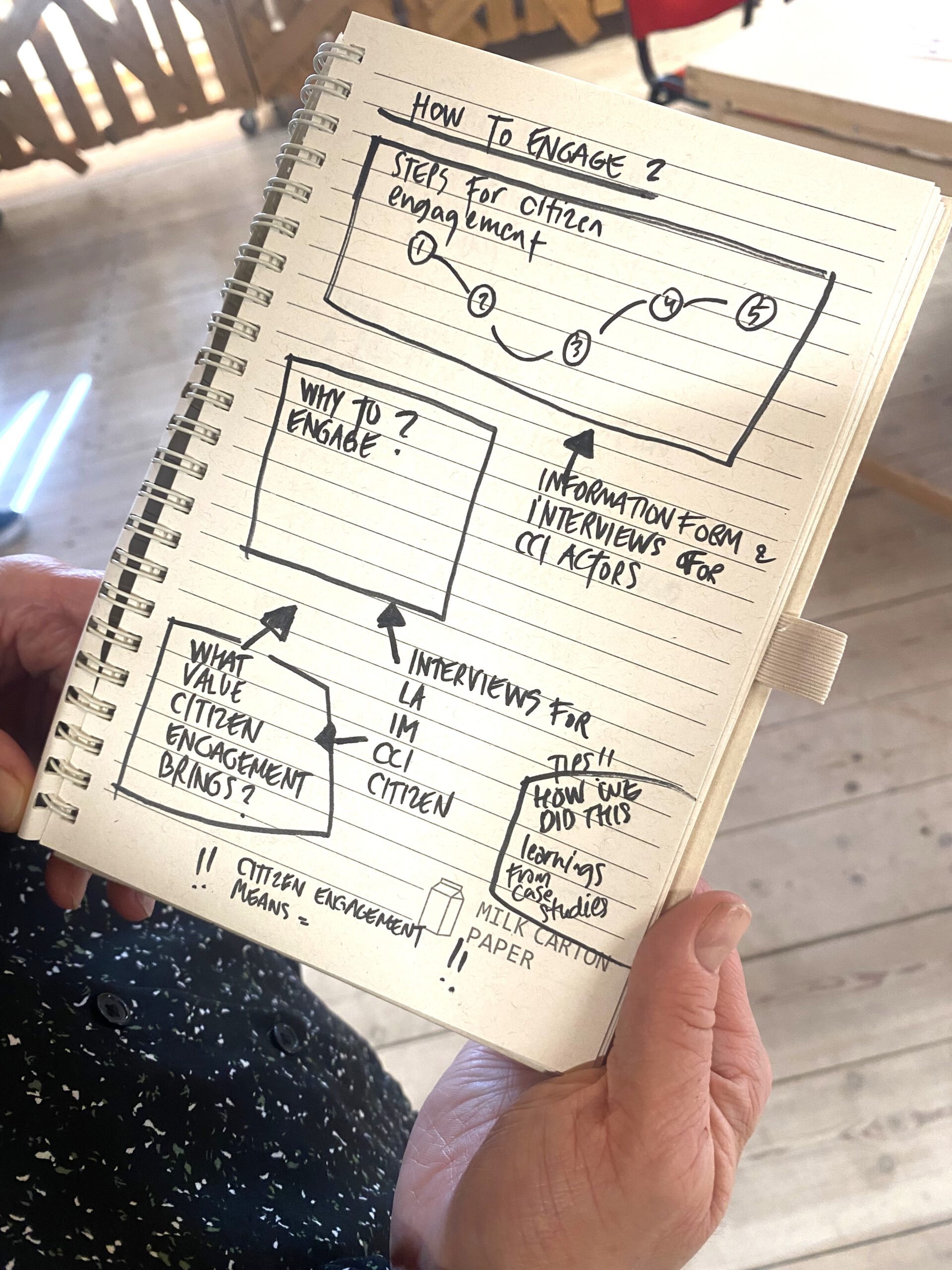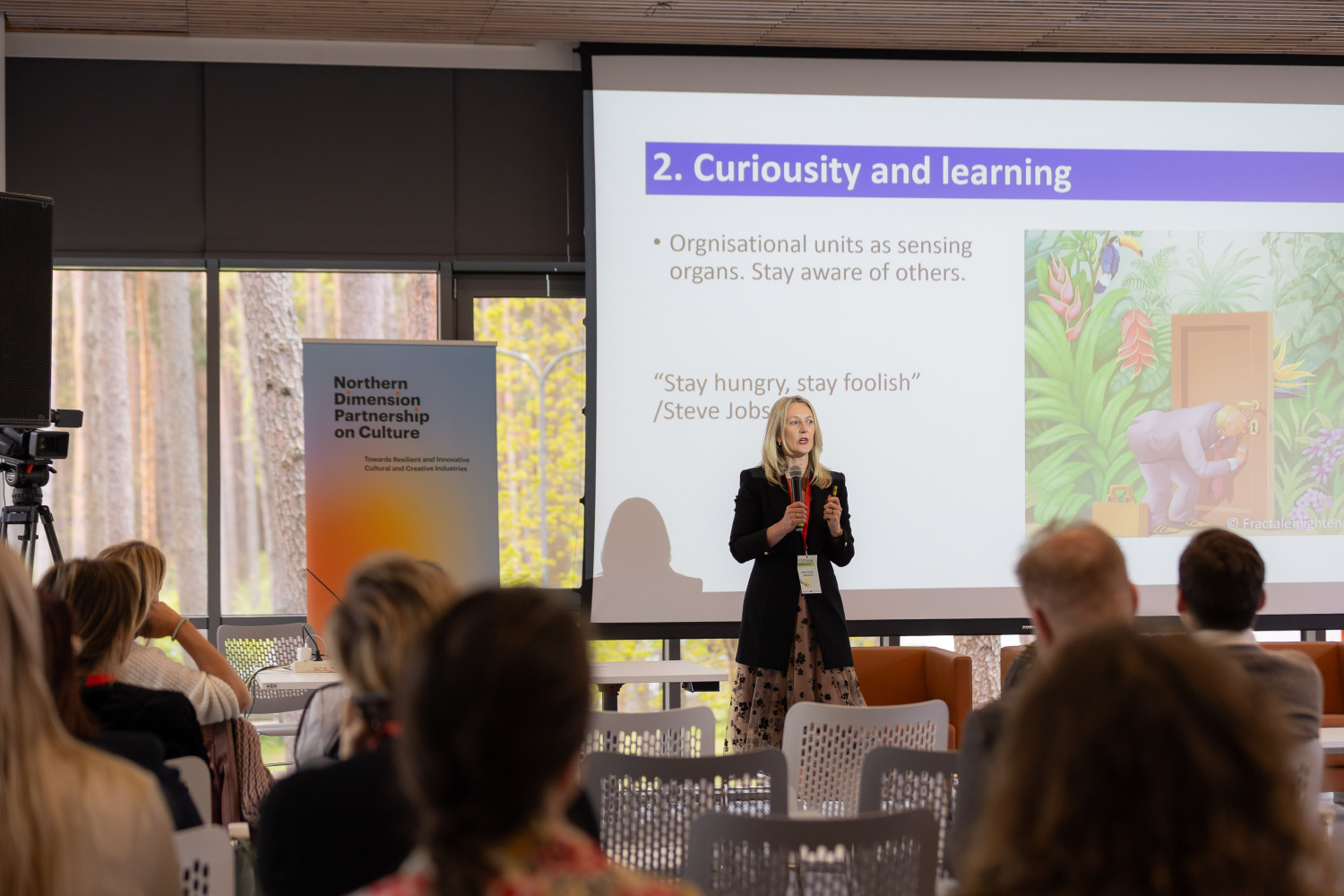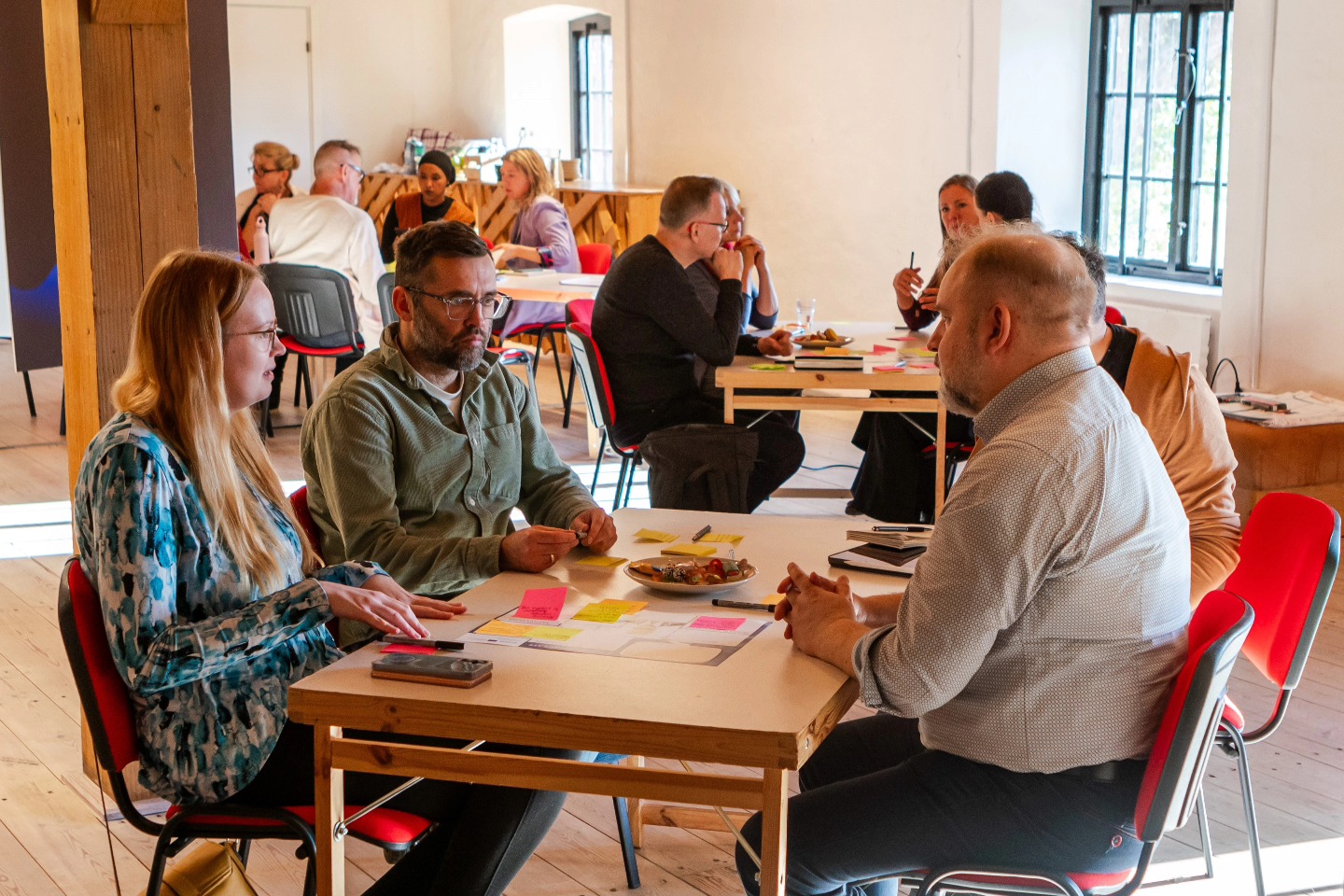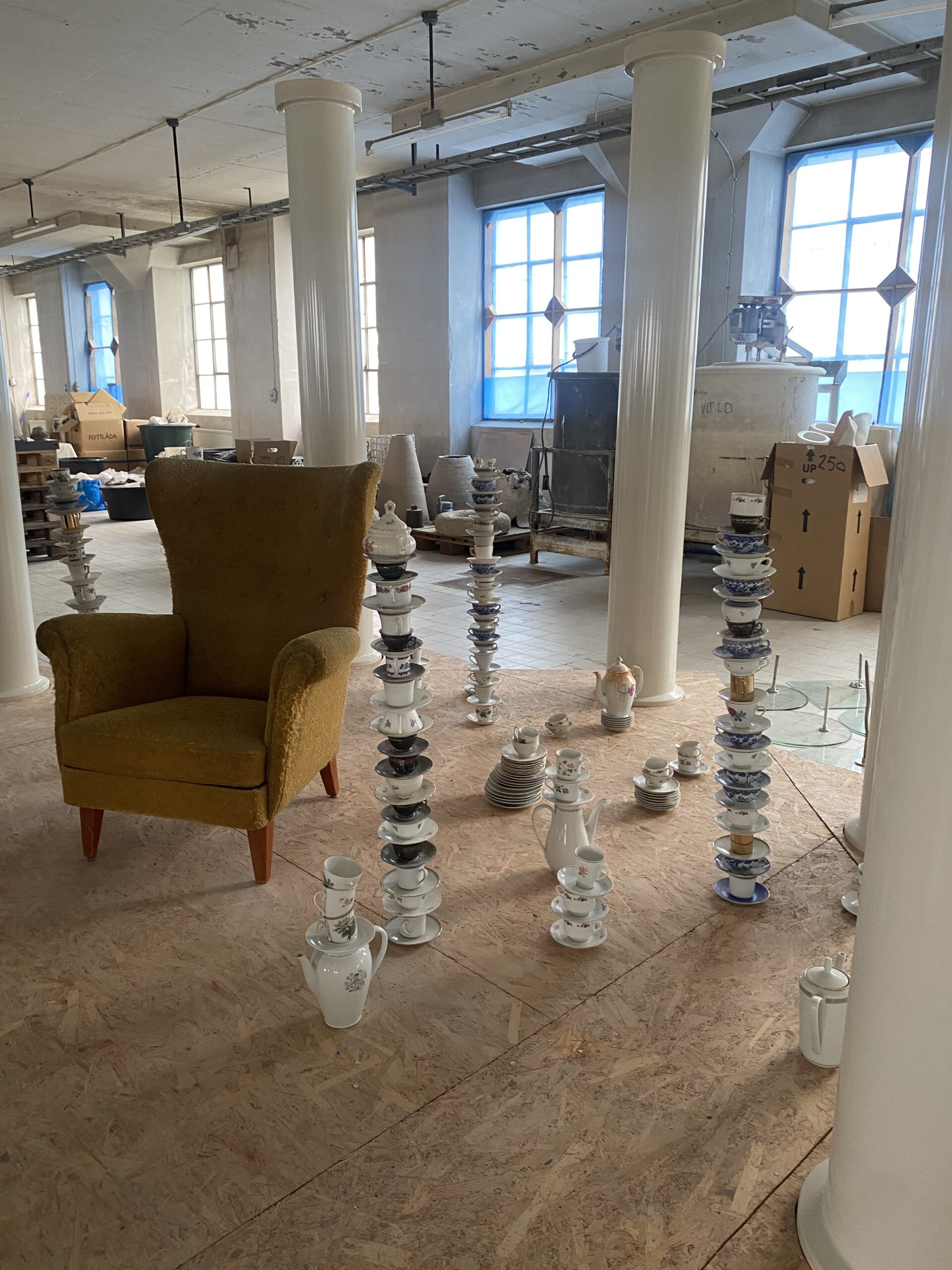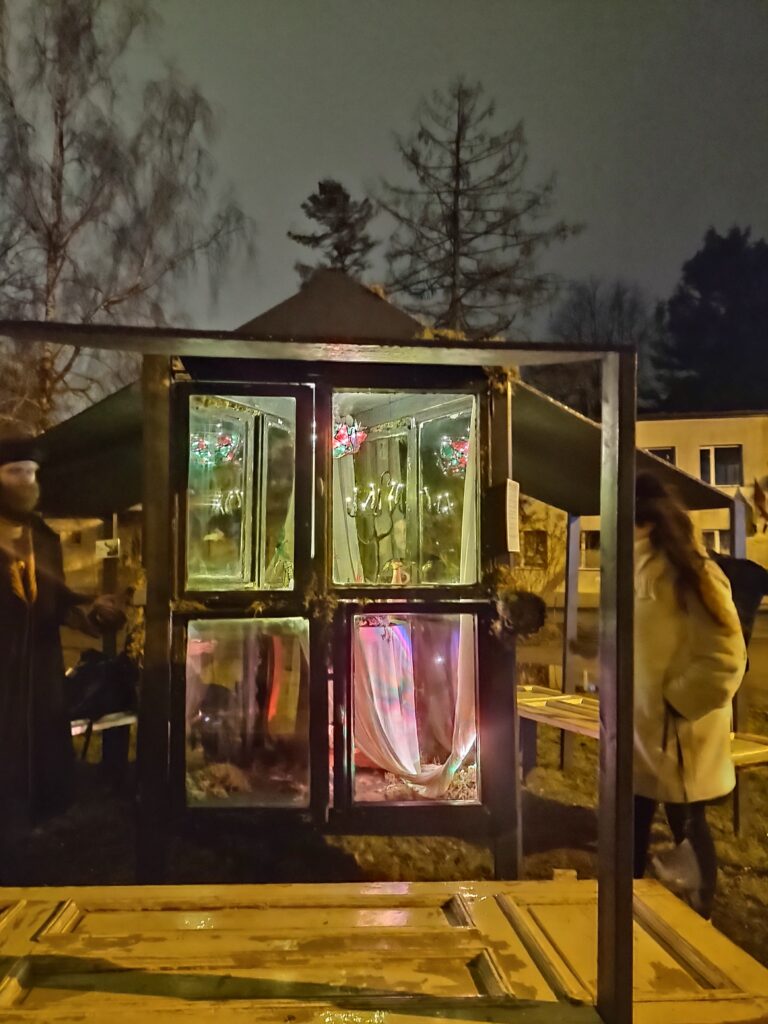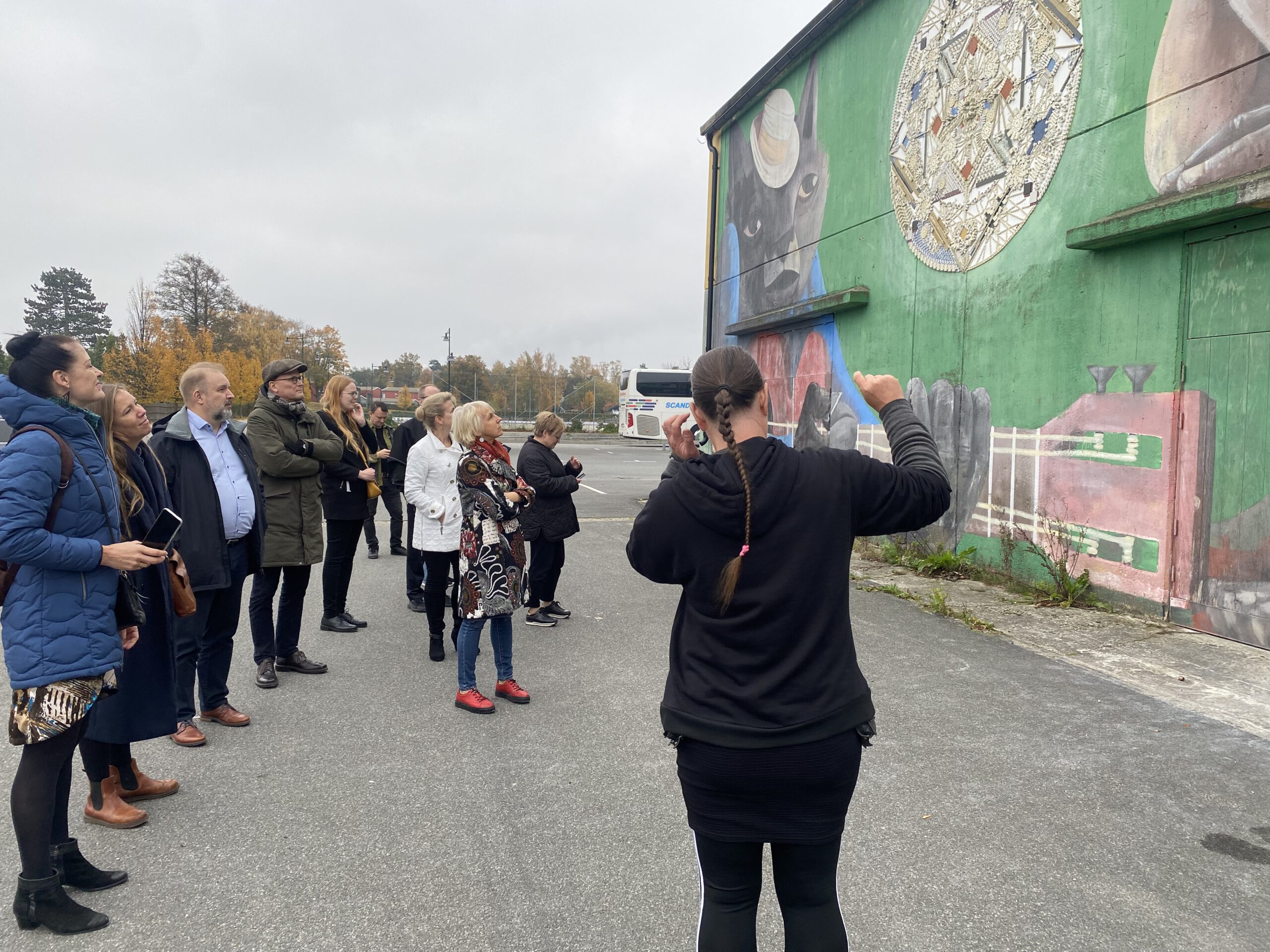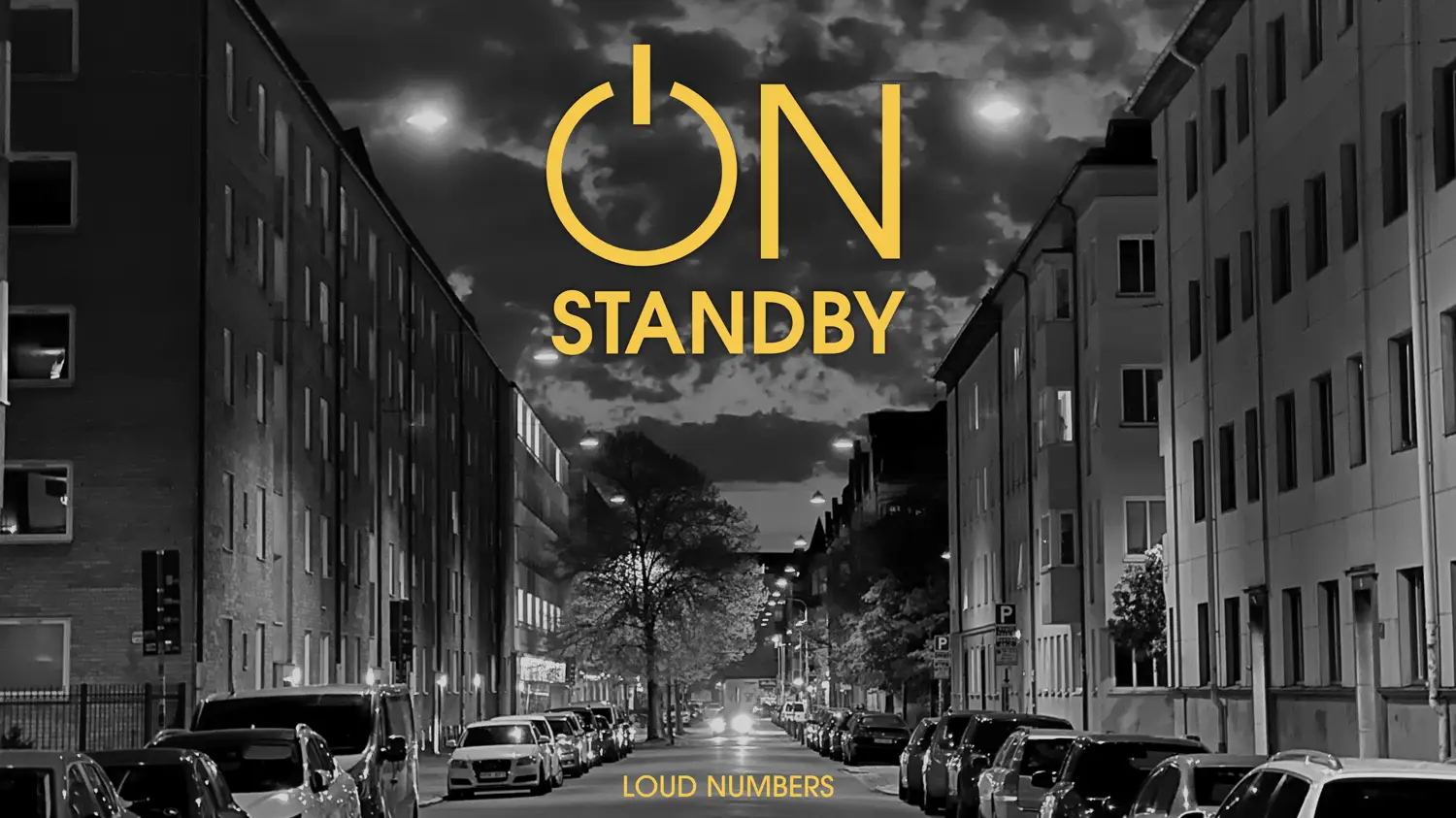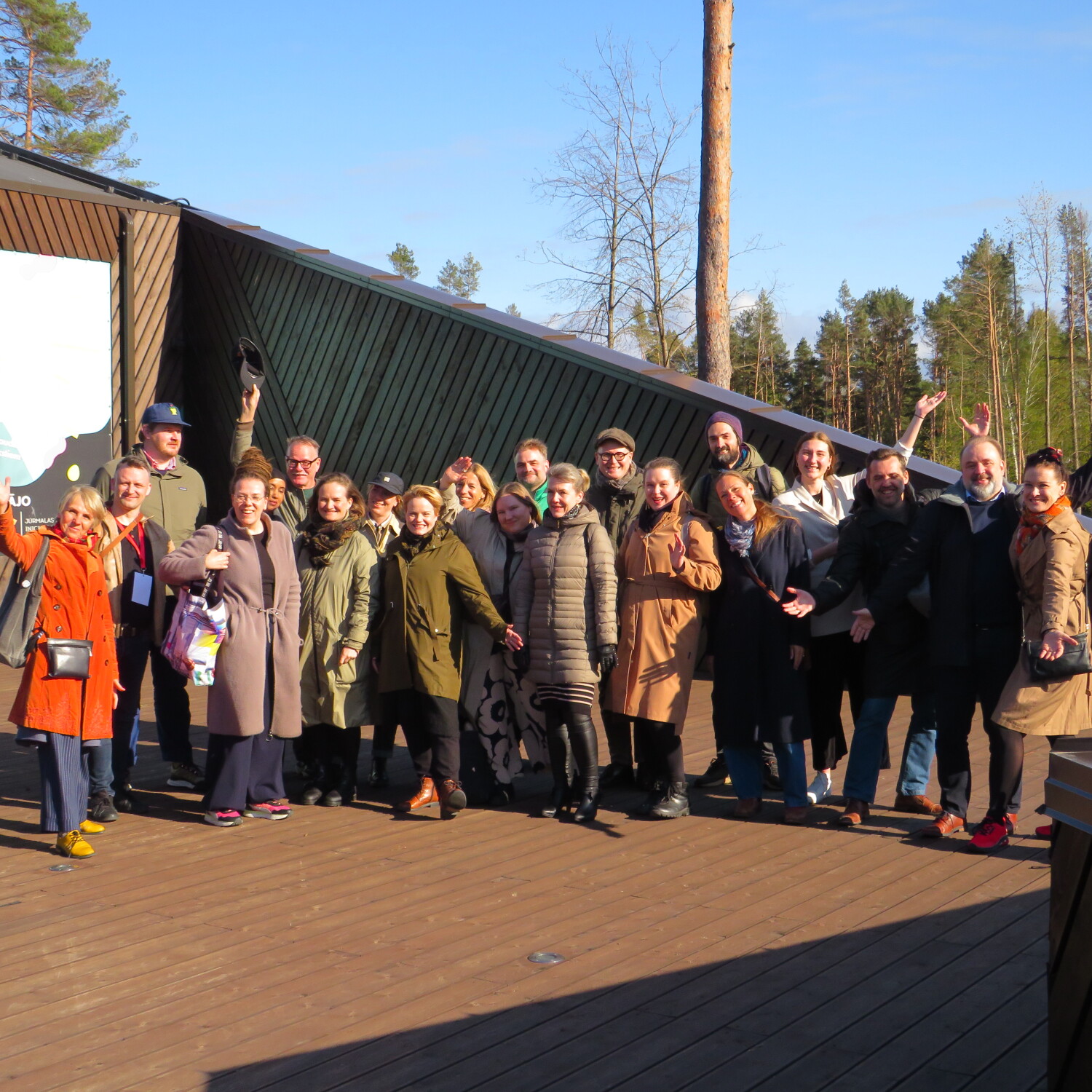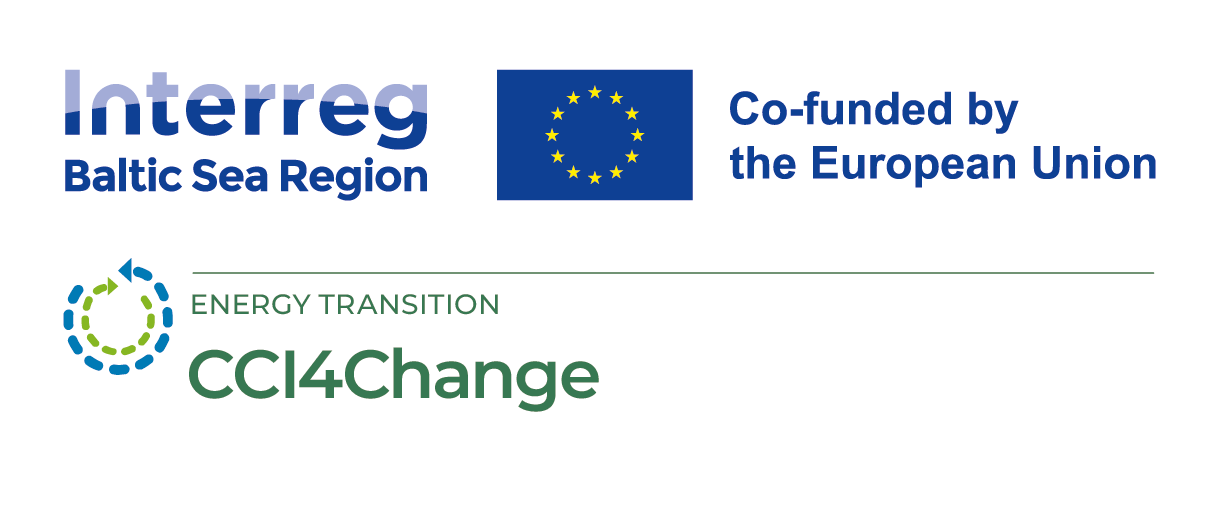
Story about CCI4Change: How Creativity is Shaping Energy-Saving Habits in Communities
30 October 2025
Everything started when three local governments—the region of Skåne in Sweden and the cities of Kotka in Finland and Jūrmala in Latvia—faced a shared challenge.
“How can energy consumption be reduced without costly investments, and how can residents be actively engaged in the process?”
They have already existing climate policies and countless campaigns with technical slogans rolling in front of people’s eyes: “kilowatts, emissions, targets.” On the other side of these campaigns, we continue to underestimate the power of everyday habits. Traditional campaigns usually encourage obvious actions, like shorter showers and turning off the lights, leaving space to integrate sustainable choices into habits and truly understand why daily habits matter on a wider scale. For residents, saving energy becomes a lengthy discussion with even longer statistical proof of how important a light switch and an abstract bill at the end of the month are.
As local authorities hold the mandate to promote common energy-saving practices, the challenge lies with them: to shift energy-saving habits from abstract concepts into personal actions and to facilitate deeper behavioral shifts in their communities, to tap into the mindsets and attitudes behind the action. Authorities are called to engage with residents and inspire a personal sense of contribution in the shift needed for long-term sustainable energy consumption behaviors. Instead of giving the residents simple technical instructions or a set of rules about what they should or should not do to save energy, authorities strive to find approaches that spark residents’ interest in the matter and get them invested.
This laid the foundation for the CCI4Change project with a simple premise: to connect local authorities with Culture and Creative Industry (CCI) professionals and in this way access the creative skills of CCI professionals to engage with citizens to take creative actions and find novel approaches needed for energy consumption behavioral change. The project would test the collaborations in practice in Skåne, Kotka, and Jurmala to learn and to design a collaboration model supporting local authorities and creative professionals to work in synergy also beyond the project scope. This way, the CCI4Change initiated a laboratory of experiments through creative community engagement across the Baltic Sea Region.
Different Creative Approaches Created One Shared Method
Across the region, action was taken by local authorities collaborating with creative professionals to make energy consumption habits more relatable and visible. Residents were invited to build a personal relationship with sustainable energy consumption through various creative activities.
In Latvia, the resort town of Jurmala and its neighborhood Kauguri faced challenges of energy inefficiency stemming from Soviet-era architecture, which became a place for project engagement. The art foundation INITIUM offered a common shared place for residents and municipalities to reconsider and discuss their energy use through interactive workshops and an artistic installation called “Neighbors’ House.” Over the course of the project, INITIUM engaged with approximately 170 inhabitants through both creative inquiries and in-depth interviews to learn about the community’s history, challenges, and everyday realities for addressing issues around energy consumption. It became a deep dive into the community fabric of Kauguri, addressing these shared challenges, such as poor insulation in housing and energy overuse. The work culminated in an interactive installation in the public space, which was based on window frames symbolizing “the eyes” of the building and the connector between the inner and outer worlds. Besides, the choice of the window was also tactical, as windows are a heat loss point in the buildings. Through this project, Kauguri residents saw energy consumption through their windows and the windows of “Neighbour’s House.”
Meanwhile, in Kotka, Finland, the “Cool Kotka” project opened a new window into a different aspect of creativity. The project took a pedagogical approach, transforming energy saving into something playful and relatable for and together with the youth. Not every learning process about sustainable habits should be a technical set of training, but it could be something fun and creative and yet impactful and immersive.
Keeping these principles in mind, a collaboration driven by the City of Kotka, two creative pedagogical approaches were tested: “The Energeezer” game, developed by students during a game jam organized by game developers, where the main character, with the help of the player, learns to live more efficiently, and the Banja Media project “This is not how you save the world,” which produced humorous videos on energy consumption made together and for the local students.
Further south, in Sweden, creativity brought together Region Skåne’s cultural development team and the creative hub STPLN. Instead of a traditional setup, collaborators decided to build a “learning alliance,” bringing together creative professionals and officials. The collaboration resulted in trainings and an open call where artists provided their creative solutions addressing community engagement in energy consumption issues, resulting in two pilot projects—one urban and one rural.
The rural pilot took place at the Ifö Center, in a repurposed ceramics factory in Bromölla, where creative professionals launched the Zero-Sum Residency, exploring sustainability, material experimentation, and alternative energy solutions through art and community participation. It included public workshops, exhibitions, and lectures and focused on the artistic reuse of industrial waste. Artists experimented with the creation of prototype low-energy tea lights and cookers, as well as community engagement around solar energy and storage. Artists, creatives, and community members discussed what “zero waste” might mean as a lived practice, with participants actively experimenting and rethinking how to reduce waste in everyday life. The pilot also showed how underused industrial sites can become cultural and ecological laboratories for community engagement in sustainable practices.
Continuing its journey in Sweden, creative collaboration transformed data into sounds for an urban pilot in Malmö made by sound collective Loud Numbers. The “On Standby” project invited households to install small sensors in their homes to record nightly electricity use data. The data was turned into a sound composition of energy consumption. As the usage varied, so did the composition of the sound. Participants’ energy consumption data was collected and later transformed into a 10-hour sound piece displayed on YouTube and on local radio stations. Audiences listened to the sound of their basic habits each time a device turned half a watt into a sound. This piece of art keeps on further informing and providing inspired reflection on the daily energy consumption habits in households. The experience allows residents to understand how small, half-watt energy, unseen actions during the nighttime contribute to larger patterns of consumption. The project changed data from being numbers to the sound of energy to make a more personal, creative, and emotionally engaging experience for the participants to reflect on their energy consumption habits.
These five case studies in the CCI4Change established the formula for what creative collaborations driven by local authorities and provided by the creatives look like in practice. Each case study approached the local energy challenges through different artistic and creative means, showing a diverse range of creative skills that can be applied in communities. Together, these case studies show how artists and public officials work together with the communities on local energy issues using creative practices, providing proof of what worked, what didn’t, and what could be done differently next time.
CCI4Change acknowledges the local authorities and enablers and drivers of the change. Maria Lindblom, Developer at the Department of Culture, Region Skåne, recalled her experience:
“CCI4Change allowed us to step outside the usual rules of public administration and confront the urgent challenge of energy with fresh eyes. By placing artistic competence at the helm, we could suspend old structures, create space for new conditions, and invite perspectives that rarely meet. In this project, we challenged ourselves to act in new ways and seized the opportunity to step beyond the established frames of how we work.”
From Creative Experiment to Proven Experience: Designing the Toolkit
Taken together, these shared activities showed how creativity can translate abstract policies into more relatable practical language for the community to engage in sustainable practices. Every step of this chain was documented in the CCI4Change Toolkit as a result. This is not only to show results of the project but also to create a traceable pathway for municipalities that want to build creative, actionable projects to promote energy awareness.
The toolkit provides a clear guide for the different parties to understand their roles and responsibilities in climate-focused creative projects. It answers the main questions that anyone could ask at the beginning of a collaboration, such as how the roles, expectations, and responsibilities are defined; how people across different sectors work together and speak the same language; and how and why residents are engaged.
The toolkit includes practical tools to help each party to learn, commit, and collaborate transparently. As an example, the “Roadmap for Collaboration” tool clarifies the steps of the different parties in achieving shared goals, and the “Key Actor Role Templates” and “Creative Procurement Guide” strengthen the ethical approach and mutual respect between partners. Meanwhile, “Trust Radar” and “Value & Impact Reflection Canvas” tools help collaborators to focus on shared understanding about the expected impacts, rather than quick results. These are just a few examples from the wider toolkit. Together, all of them support partners to build meaningful, long-term connections and reduce confusion about roles and expectations.
Tomi Höök, project manager for the creative industry at XAMK, commented on the impact of the collaboration model:
“The CCI4Change cooperation model proves the importance of achieving a common understanding between different actors. The developed tools can promote this consensus formation and show the direction of where and how to start cross-sectorial development work.”
Finally, the toolkit covers all sides of collaboration: creative professionals, local authorities, and intermediaries who facilitate these collaborations by providing a shared structure, defined roles, and a repeatable model for co-creating impactful initiatives.
The tools are providing support to form cross-sectoral collaborations, which enable new solutions that are human-centered, experimental, and responsive to real community needs. They serve as a starting point for anyone who plans to create partnerships in the fields of culture, community, and sustainability or the intersection of those fields. Municipalities can use it to apply local policies more creatively, cultural professionals can use it to build stronger collaboration, and educators can apply its methods in trainings and workshops.
A Small Project with a Big Purpose
The CCI4Change project does not promise immediate and large-scale transformation in energy efficiency. Instead, it provides tested methods, a formula for cooperation, and a collection of stories in its toolkit to inspire municipalities, cities, and regions. Large-scale transformation begins with small steps, and CCI4Change contributes to that process by providing the toolkit for facilitating new ways of working through cultural collaboration. Following this structure, CCI4Change demonstrated that creativity is not a luxury in energy and climate actions; it’s a common language between people and municipalities and a bridge toward the needed change.
As Edgar Razinskis, representative of the Jūrmala municipality, summarized it:
“The project brought value to local authorities by giving them practical tools and methods to work with creative industries on climate and sustainability challenges. It showed how municipalities can engage communities in new ways, using creativity to build trust and encourage behaviour change.”
Although the project has reached its final destination, the creative mindset of the project left in its toolkit and among those who took part will continue to reach even further milestones. CCI4Change has shown that the changes needed for more sustainable futures begin with working in synergy to imagine creative solutions. Now, the ball is passed to local authorities and creative professionals to carry forward the project’s legacy into their local contexts to face challenges with creativity and innovation. In this sense, CCI4Change is not a finished project but an ongoing practice that pushes the envelope of local authority-driven innovative collaborations, engaging communities through creativity.
